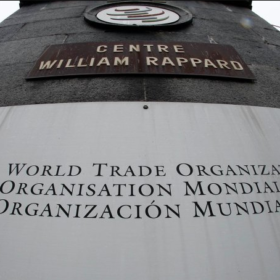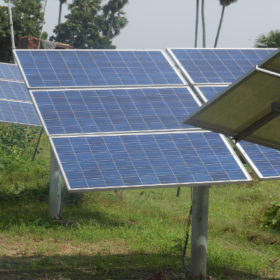Europe solar industry should not be naïve about China, warns trade group EU ProSun
Speaking on the occasion of the EU-China Summit, Milan Nitzschke, presideut of EU ProSun, issues warning that China state-influence in the solar industry is nefarious and directly responsible for job losses in Europe.
U.S. OPIC under investigation for loans to Chilean solar projects
An internal U.S. government watchdog is looking at the loans which kick-started large-scale solar in Chile, after at least three of five solar projects have made moves to restructure these loans.
United States informs WTO of trade petition investigation (ITC notification embedded)
The U.S. International Trade Commission has informed the WTO that it is moving forward with its investigation into whether Suniva and SolarWorld deserve “global safeguard” protection from their competitors.
Argentina plans 1 GW solar + storage project
Following on the progress of 300 MW of solar projects in Cauchari, the province of Jujuy has announced another gigawatt of solar PV to be installed in the northern region.
India: solar tax will be 5%, minister confirms
In tweet sent yesterday, India revenue secretary Hasmukh Adhia said that all solar equipment will be subject to only 5% Goods and Services Tax, allaying fears cells and modules would be placed in 18% bracket.
Trump stalls on Paris climate agreement
The U.S. president declined to sign on to consensus language composed by G7 leaders, and has said that a decision will come some time this week. However, implications for solar and renewables may be limited.
APVIA sees steady Q1 growth in Asian PV
The expansion of the Asian solar market in the first quarter of 2017 was broadly similar to the growth seen in the first quarter of last year, although most countries in the region have yet to reveal official installation statistics for the January-March period, the Asian Photovoltaic Industry Association (APVIA) said in a new report.
SolarWorld Americas joins Suniva’s trade petition
After originally being cool to Suniva’s petition to the U.S. International Trade Commission for protection from its Chinese competitors, SolarWorld Americas has reversed its stance and joined the complaint as a co-petitioner.
BREAKING: U.S. ITC moves ahead with Suniva investigation
The U.S. International Trade Commission decided late tonight to move forward under Section 201 of the Trade Act of 1974 to investigate whether the bankrupt module maker deserves protection from its Chinese competitors.
India: solar tax hike could increase power project prices, say industry heads
The 18% Goods and Services Tax rate for solar cells and modules could pose significant threat to around 10 GW of ongoing utility-scale solar projects, says Bridge to India.









